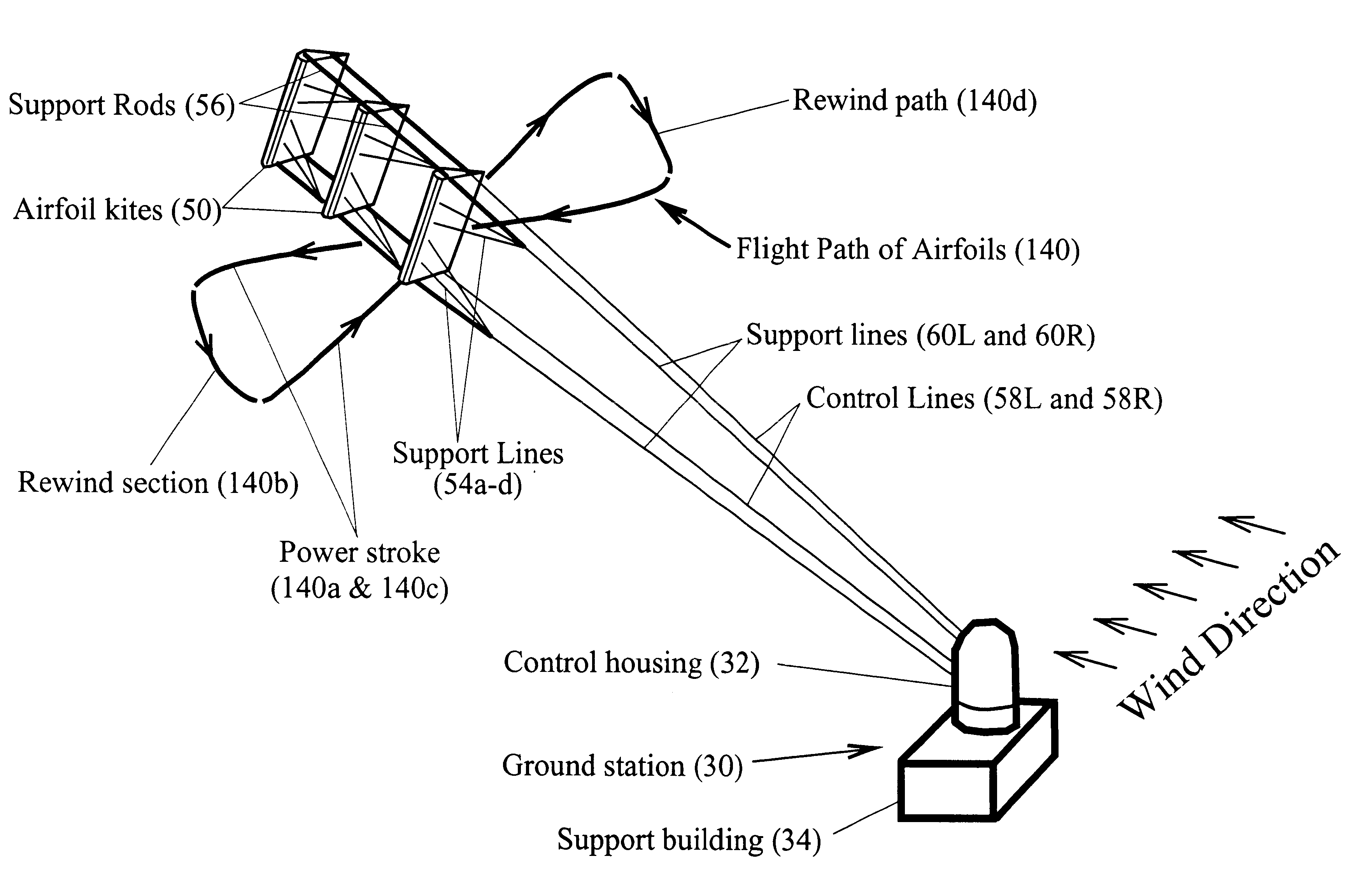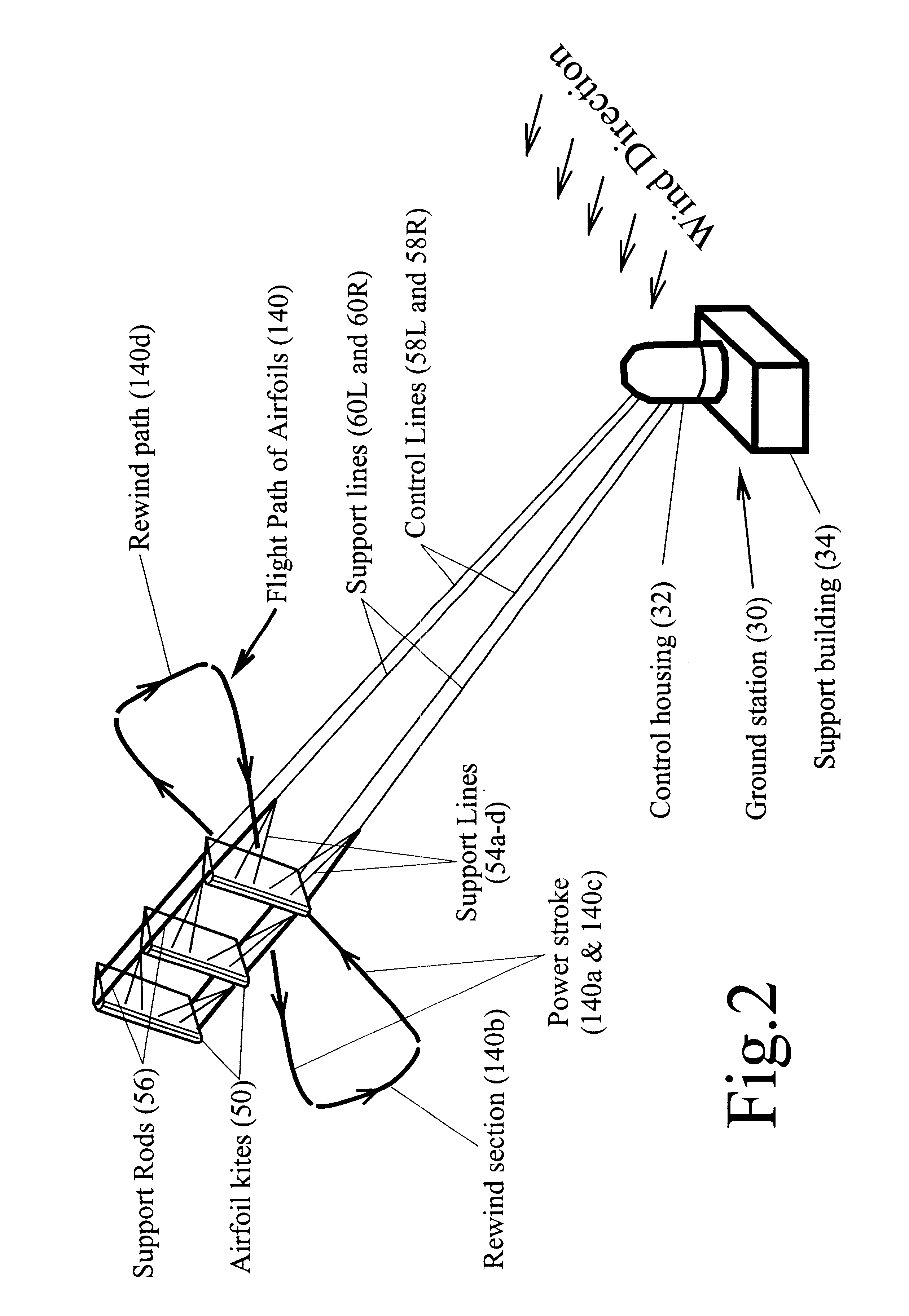Axial-mode linear wind-turbine
a wind turbine and linear technology, applied in the direction of machines/engines, toys, transportation and packaging, etc., can solve the problems of limiting the amount of energy collected, uneconomical type of system, and high cost of lifting an entire wind turbine and generator into the sky
- Summary
- Abstract
- Description
- Claims
- Application Information
AI Technical Summary
Problems solved by technology
Method used
Image
Examples
Embodiment Construction
Before we go into great detail of the preferred embodiments, we should consider some of the physical properties involved which govern the operation of this type of turbine kite system. At this time it is sufficient to understand the general design for the turbine kite from FIG. 2. This system consists of three airfoil kites 50 in tandem which are attached to the Ground Station 30 by support lines 60L and 60R, and control lines 58L and 58R (collectively the support lines and control lines will be referred to throughout this patent as control lines). By controlling the differential length of these control lines, the airfoil's direction and speed can be controlled from the ground to follow the shown Flight Path. The control lines are also directly connected to a shaft and pulley system (see FIG. 12) in the Ground Station 30. As the Airfoil Kites 50 are propelled by the wind at very high speed, all four control lines are reeled-out under tremendous force causing the pulley and shaft in ...
PUM
 Login to View More
Login to View More Abstract
Description
Claims
Application Information
 Login to View More
Login to View More - R&D
- Intellectual Property
- Life Sciences
- Materials
- Tech Scout
- Unparalleled Data Quality
- Higher Quality Content
- 60% Fewer Hallucinations
Browse by: Latest US Patents, China's latest patents, Technical Efficacy Thesaurus, Application Domain, Technology Topic, Popular Technical Reports.
© 2025 PatSnap. All rights reserved.Legal|Privacy policy|Modern Slavery Act Transparency Statement|Sitemap|About US| Contact US: help@patsnap.com



